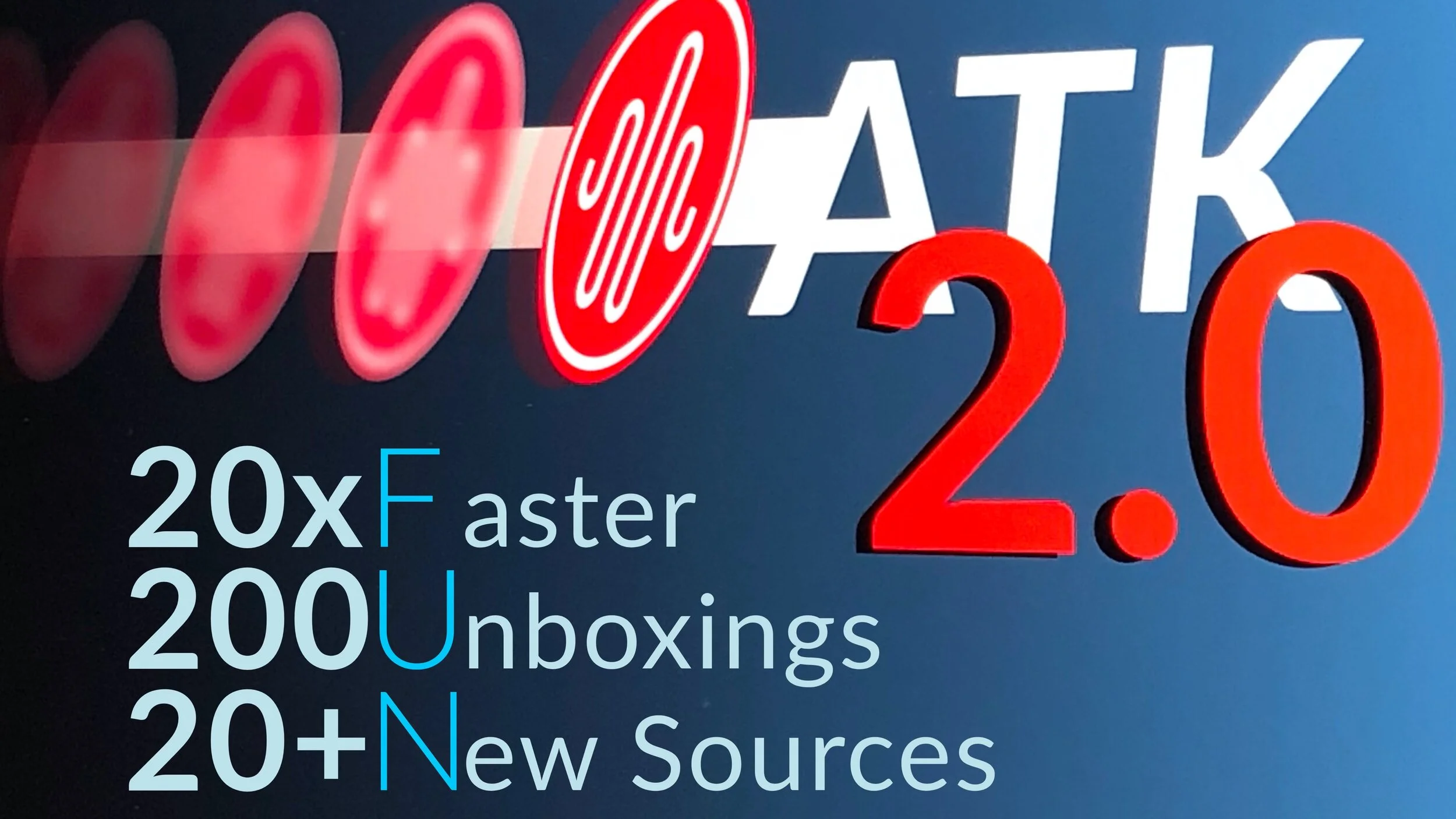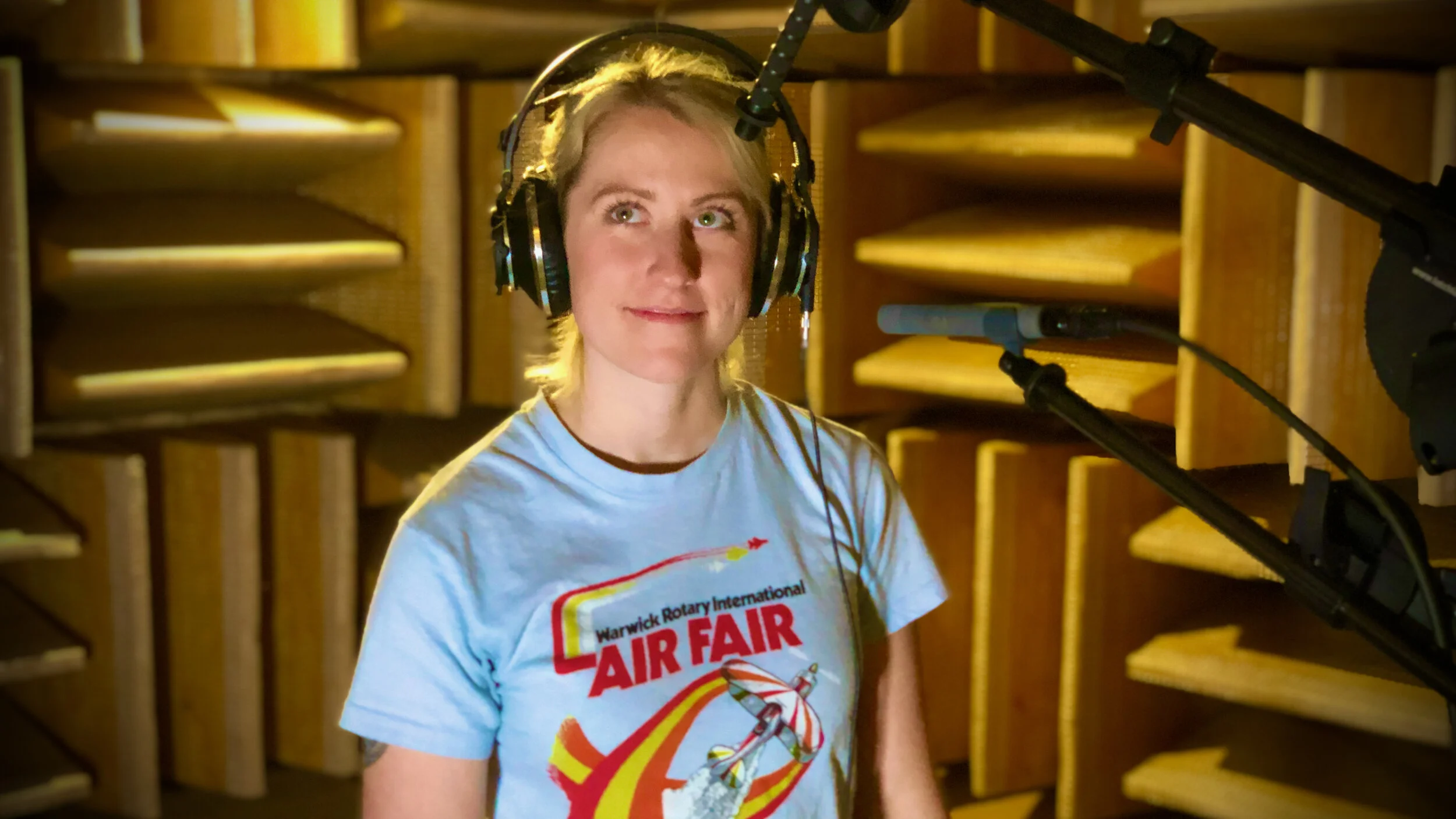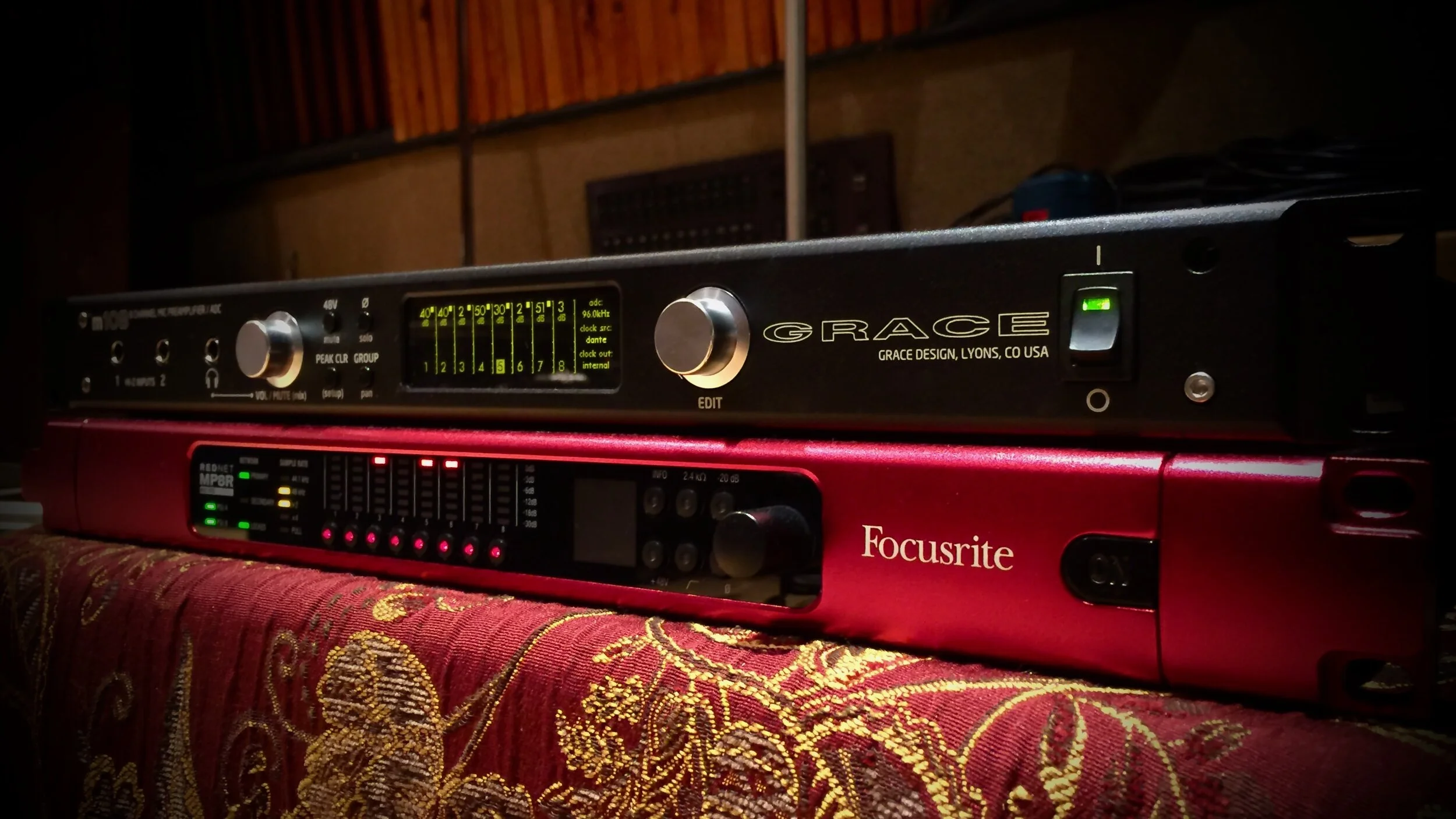When Small Studio Monitors are the Best Choice
Many monitor manufacturers offer multiple speakers within a product line, oftentimes distinguished by size.
Culver City, California
SHRINKING THE FIELD
Well obviously we choose small studio monitors when we have a small room, right? That can be true, but it’s not the rule.
To begin, let’s narrow the field a bit. Let’s keep this discussion within traditional 2-way nearfield studio monitors that are meant to be full range, as opposed to specialty small reference monitors like Auratones, ‘mix cubes,’ and other small references. Many monitor manufacturers offer multiple speakers within a product line, oftentimes distinguished by size. When would I choose the smallest monitor within a manufacturer’s line? What’s the use case for selecting a particularly diminutive speaker?
SIZE MATTERS, SORT OF
Picture a 3-way studio monitor: woofer big, midrange medium, tweeter small. Human hearing is least sensitive in the low frequencies so we need big woofers moving lots of air to hear that low range at the same perceived volume relative to the higher frequencies. Our ears are most sensitive to the ‘baby’s cry’ frequency range, 2-3k. Kind of like I’m most sensitive to sound in the cymbal frequency range - ouch. The more sensitive our ears are to a part of the spectrum, the less power a speaker needs to make in that range. And since frequency sensitivity varies from person to person, it partly explains why we each have preferences for different studio monitors, guitars, microphones, distortion pedals, etc.
What matters is actually the amount of air the speaker system can move.
Woofer big isn’t the only way to get more bass. The woofer can be designed to move more air by moving more, farther back and forth. This is called excursion. You may have noticed a small woofer in a compact monitor really fluttering in and out when it’s called to reproduce deep bass. This is by design. Other ways to get more bass involve using the air volume of the speaker cabinet to reinforce the woofer’s energy like an organ pipe, and with some designs, equalization, in either the analog or digital (DSP) domain.
OK, so that’s background to explain why woofer big, midrange smaller, tweeter smallest. And when it comes to driver design, the lighter it is the more responsive it is. And the more responsive, the closer its sound to the signal we put into it. Each driver need only be as big as what we demand of it.
Let’s refresh with two relevant excerpts from my recent article, “HOW TO CHOOSE STUDIO MONITORS - A FORMER SALESPERSON’S PERSPECTIVE.”
Big room, big speaker. How loud the speakers sound in your room is determined by three things: the speaker’s output capability, the size of the room, and how far away you’re listening.
ROOM SIZE VS. SOUND LEVEL
How loud the speakers sound in your room is determined by three things: the speaker’s output capability, the size of the room, and how far away you’re listening. Speakers move air. Small room, less air. Large room, more air to move to play at the same volume. You can move more air with more power. Power comes from the amplifiers, the drivers’ (woofer, tweeter) output capability, and the speaker enclosure’s effectiveness at transmitting that power into the room, as opposed to losing the energy to cabinet vibration, for example.
Just by their size, we might assume larger monitors have more headroom, can play louder, and fill a larger room. This will be true if the amplifier power and cabinet efficiency also have increased capabilities.
There’s a spec called ‘Maximum SPL’ (Sound Pressure Level) that is designed to help you compare their volume capability. The problem is the spec is inherently misleading and it’s measured differently by different brands. The two biggest unknowns with this spec are the extent to which it tells us how loud a speaker can play at the lowest frequencies, and whether they’re talking about a quick volume peak or a sustained loud volume. It’s really common that studio monitors can play much louder in the midrange than in the bass. The SPL specs likely don’t tell the whole story of how loud a monitor can go.
Almost none of the manufacturers make this information easy to find.
Until someone like Audio Test Kitchen measures all studio monitors under the same conditions and makes the measurements easy to translate into useful information like how loud the speaker will sound in your room, we’re stuck with what we’ve got.
So for now, let’s conclude that larger monitors, with larger drivers, more powerful amplifiers are strong indicators of potentially higher output. Unless we dive into distortion specs, we don’t know how clean, pleasant, accurate, or distorted that sound will be, but it’s a start.
The subwoofer can solve a number of issues.
SUB
In a stereo monitoring rig, subwoofers should be considered for two reasons: to extend the response of the left/right mains, and to expand the headroom of the overall system.
In the first scenario, the main speakers you’re considering or already own may have limited coverage down into the lowest frequencies. In the second scenario you either need/want more low frequency power so you can bump that sh!t, or you want to increase the headroom on your L/R mains by reducing their workload* in the lowest, most power-hungry frequencies. A sub may enable you to turn up the system louder, or fill a larger room.
It’s not required, but it can be beneficial to buy a sub of the same brand/family as your L/R mains because the designers have undoubtedly designed the crossover to integrate seamlessly within their family of products.
*When a sub is integrated, typically the output from your mixer, DAW, or monitor controller first passes through the subwoofer where the sound is divided by a crossover that keeps the sub frequency range for the subwoofer and passes along the frequencies above that to your L/R mains. When the mains don’t have to work so hard on the bass, their headroom is increased.
Again, it would be great if we had reliable information to determine exactly how low a speaker can effectively play and a standard to compare across products and brands.
Some small monitors are meant to do it all, whether they can or not. Some small monitors optimize everything but the lowest frequencies.
USE CASES FOR SMALL MONITORS
SMALL ROOM
In a small room, we don’t need to move as much air. Compact monitors generally correlate with lower air-moving capabilities, therefore lower SPL. A small room may be intended for a single person who is going to be listening closer to the speakers.
LOW VOLUME NEEDED
A typical characteristic of a manufacturer’s studio monitor product line is a range of products from small to large. The main elements that consistently change across these size variations are the woofer and amplifier size. It’s likely the smallest monitor within a product line is meant to have the lowest maximum SPL.
CLOSE LISTENING DISTANCE
Generally, you should be able to listen closer to smaller monitors. All the small studio monitors I’m picturing feature closely spaced drivers and smaller drivers, or at least smaller woofers, coming out of smaller boxes. All other things being equal, the smaller the area from which the sound originates, the shorter the distance at which the sound from the woofer and tweeter converge together into a coherent sound. It’s possible to tune the tweeter’s waveguide to optimize tweeter dispersion for closer listening distances, but this will vary from manufacturer to manufacturer.
The closer the speakers are to your ears, the more direct sound you’ll hear vs. the interaction with the room. If the room is bad, you can use your monitors super close up in the ‘ultra nearfield.’
A look at how low a small monitor extends down into the bass frequencies and how loud it play in each frequency range. As is typical with small monitors, the one measured here appears to extend effectively down to around 50-60Hz, but can’t play as loud down there compared with it's SPL capabilities in the midrange and treble. This means that up to a certain volume this monitor is capable of delivering a flat frequency response from about 50Hz on up. (Image courtesy of ADAM Audio)
SIZE WISE
SMALLER PACKAGES
Small size does not always correlate with lower sound quality. Some manufacturers offer small, compact monitors with the same high-end technology as their larger speakers. For example, the ADAM Audio A4V uses the same DSP and hand built folded ribbon tweeter as the flagship A Series monitor. Genelec, Neumann, and IK Multimedia compact 2-way designs also come to mind. If you require high resolution in a smaller package, search on your favorite retail site by size, then filter by price, for example 4” monitors: Price: High > Low. Note that some monitors are sold in pairs, and some are sold in singles.
SMALLER BASS
Even though advances in DSP, driver, amplifier, and cabinet technology have improved low frequency performance of studio monitors across the board, small monitors still typically correlate with reduced low frequency performance. Oftentimes there’s a point below which a studio monitor just cannot go. You can see this when you compare, for example, the unusually forthcoming and thorough specs from ADAM Audio’s A Series. While one cannot overlay the low frequency measurements from monitor to monitor, Audio Test Kitchen style, one can individually assess how low they go.
When your monitors don’t tell you, to borrow a phrase from the band Romantica, what’s going on down below, the solution is to reference another set of monitors or headphones or to integrate a sub.
Subwoofer systems can make it easier to get the bass right in less than ideal rooms.
ADVANTAGES OF SUBWOOFER INTEGRATION
WHEN A WOOFER BECOMES A MIDRANGE
Unless a pair of studio monitors have been designed specifically to not reproduce the lowest frequencies in the spectrum, they’re gonna try their darndest. That means that even though the woofer may be just 4, 5, or 6” it’s likely to be a thick and sturdy one - in other words, not optimized for light and quick movements. But there’s a big ‘but.’ When you say,
It’s OK lil’ woofer 🐶, you don’t haveta pretend yer a big dog!
you reduce its workload and increase its headroom, improving the dynamics and accuracy of the frequencies it’s left with, the midrange.
PREFER TO INTEGRATE WITH A SUB
A system with a pair of monitors plus a sub is called a ‘satellite’ system. The left and right monitors are the satellites to the subwoofer.
The ideal place in a room for the upper frequencies (midrange and treble) may not be the ideal place for the bass. Without needing a deep dive into acoustics, there’s an easy way to understand how your speakers interact with your room and why some placements are dramatically better than others. In high-end studios, one of the main reasons you see their giant speakers mounted in the wall or against the wall is to optimize the way the bass waves behave in a room. The second you place a speaker away from the wall, not only do you hear the bounces from the sound coming off the front and sides of the speaker, but you get the bounces off the back. When these bounces come back to your listening position, they combine with the sound coming directly out of the speakers in bad ways, often dramatically canceling or reinforcing specific low frequencies.
What if you could eliminate one of the bad bounces in your room? Could you dramatically improve the accuracy of the bass you hear just by where you place the speakers? You can, by placing the speakers against one of the walls. Take it a step further, eliminate another bounce by placing the speaker where the wall and floor meet, and one step further, where two walls and the floor meet in the corner. If you do this, you’ve significantly reduced the number of bad bounces the sound could take.
But placing your speakers in the corner to optimize the bass is possibly the worst placement for hearing the midrange and high frequencies. What if you had the flexibility to put the bass in the ideal spot in the room and the midrange and treble in the ideal spot? With a satellite system you can.
The last issue you have to deal with is the time difference between when the bass frequencies combine with the midrange and treble. The big benefit of a 3-way speaker is that all the frequencies you hear coming directly from the drivers are more likely to arrive to you at the same time. The sound from a speaker farther away from you will arrive later. So it can become tricky to balance the sub’s placement priority between the acoustically ideal spot vs. the closest, most time coherent position relative to the satellites. Oy vey, just when we had minimized acoustic bass issues, now we have to think about the impact on time. There is a solution and it’s called time alignment.
The best-implemented sub-integrated systems time-align the arrival of the bass frequencies with the mid and treble. All modern PA systems with separate subs are managed by a device that can control the level, timing, phase, and EQ of the sub and each of the other drivers. That kind of sophistication has long been uncommon in studios. But with the increase in multichannel, immersive monitoring rigs it’s a requirement.
And there’s one more benefit to a satellite system. When the bass comes from just one place - one speaker - you eliminate interference and cancellations caused by differences in the way the bass from two or more woofers arrives at your listening position and all the crazy bounces it takes to get there. Seems like implementing a subwoofer is a massive solution to a massive problem.
Subwoofer systems can deliver similar benefits of a 3-way system at a much lower cost.
SAME BENEFITS OF LARGER 3-WAY FOR LESS MONEY
Look at a typical three-way studio monitor: They’re often larger, have a larger woofer, and are more expensive. As I said in my recent article on choosing studio monitors,
Another major signpost in monitoring quality that often comes at higher prices is the three-way design. There can be advantages to optimizing individual drivers for bass, midrange, and treble compared with covering all the frequencies with a single full range or two-way (woofer+tweeter) arrangement.
So we notice each speaker in a 3-way system is typically made of a larger woofer (8” or more), a dedicated midrange driver (3-5”), and a tweeter.
You can create your own 3-way system, typically at a lower price, and optimized for a smaller space or for lower volume requirements by combining a pair of small 2-way monitors with a sub.
Compact studio monitors can be advantageous in an immersive loudspeaker array.
IMMERSIVE ARRAY
Compact monitors may be the perfect solution for a multi-speaker array required for an immersive mixing setup due to space and/or cost constraints. In this scenario, the way the sound disperses becomes quite important. One advantage of small monitors, as we discussed earlier, is that they behave more like a point-source - because the drivers are closer together in a smaller cabinet the sound seems to come from one place. In immersive setups, this point-source effect can help create a more accurate sound field. Reduced low frequency extension becomes a non-issue in bass managed immersive arrays that rely on integrated subs for the lowest frequencies.
CONCLUSION
Smaller studio monitors are a great choice for optimizing the relationship with your room. They’re great for bringing the sound closer to your ears so that you hear more direct sound and fewer room problems. In less ideal acoustic environments, compact monitors with limited bass extension can be superior to traditional monitors when combined with a well-implemented sub. High quality compact monitors could be a better solution than larger monitors in immersive arrays.
Learn more about choosing studio monitors in Audio Test Kitchen’s guide to choosing studio monitors from a former salesperson’s perspective.












